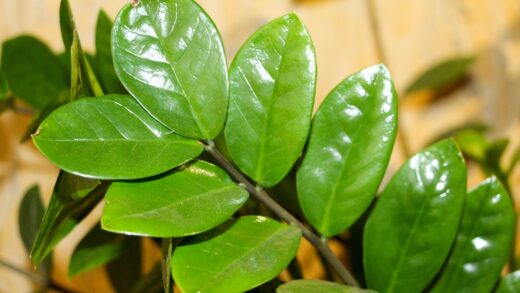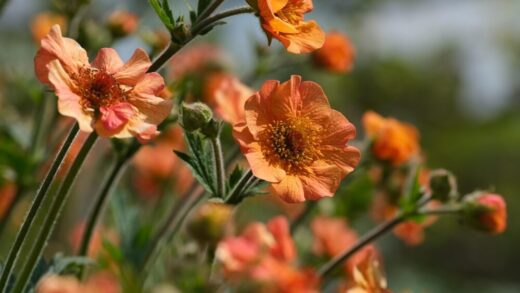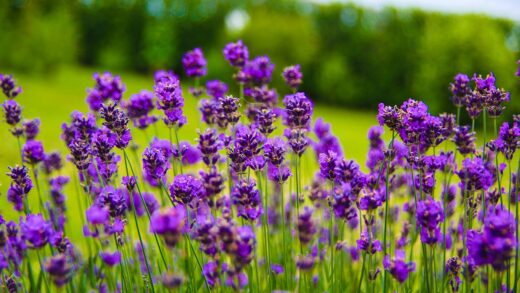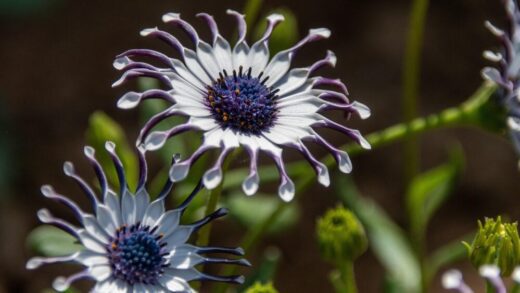Understanding the water requirements of orpine is fundamental to its successful cultivation, as this aspect of its care is deeply intertwined with its succulent physiology. This plant has evolved to thrive in arid, well-drained environments, equipping it with fleshy leaves and a robust root system designed to store water and endure periods of drought. Consequently, the most common mistake in caring for orpine is overwatering, which can lead to a host of problems far more severe than those caused by underwatering. A judicious and restrained approach to irrigation is therefore not just beneficial, but essential for maintaining the health and structural integrity of the plant.
Once established, orpine is exceptionally drought-tolerant, often requiring little to no supplemental irrigation in many temperate climates where natural rainfall is sufficient. The plant’s needs are highest during its initial establishment phase, typically the first growing season after being planted. During this period, consistent moisture is necessary for the development of a deep and extensive root system, which will be the foundation of its future resilience. However, even at this stage, the soil should be allowed to dry out between waterings to prevent the onset of rot.
The key to proper irrigation is to mimic the conditions of its native habitat, which involves infrequent but deep soakings rather than frequent, shallow sprinklings. This method encourages the roots to grow deeper into the soil in search of moisture, making the plant more self-sufficient and stable. Checking the soil moisture is the most reliable guide for when to water. A simple test is to insert a finger or a small trowel into the soil near the plant; if the top two to three inches are dry, it may be time to consider watering.
Ultimately, the specific watering frequency will depend on a combination of factors, including the local climate, soil type, and the age of the plant. A plant in a sandy, fast-draining soil in a hot, sunny climate will require more frequent watering than a plant in a cooler region with heavier soil. Observing the plant itself is also a crucial skill. While slight wilting on a very hot afternoon is normal and not necessarily a sign of thirst, persistent wilting or dull, lackluster leaves may indicate a need for water.
Understanding its succulent nature
The water needs of orpine are directly dictated by its succulent characteristics. Succulents are plants that have adapted to survive in arid environments by storing water in their leaves, stems, or roots. Orpine’s thick, fleshy leaves are its primary water storage organs, allowing it to maintain hydration through extended periods without rainfall. This internal reservoir is a key survival mechanism that makes the plant incredibly resilient to drought but also highly vulnerable to the consequences of excessive moisture.
More articles on this topic
This physiological adaptation means that the plant’s root system is not designed to function in constantly damp or waterlogged soil. When the soil remains saturated for prolonged periods, the roots are deprived of oxygen, leading to asphyxiation and decay. This condition, known as root rot, is the most significant threat to orpine’s health and is almost always caused by overwatering or planting in poorly draining soil. The symptoms of overwatering, such as yellowing leaves and a mushy stem base, are often mistaken for a need for more water, leading to a fatal cycle.
The plant’s growth cycle also influences its water requirements. During periods of active growth in the spring and summer, its water uptake will be at its highest as it produces foliage and prepares for flowering. However, even during this time, its needs are modest compared to non-succulent perennials. As the plant enters dormancy in the autumn and winter, its metabolic processes slow down significantly, and its need for water becomes virtually non-existent. Watering during dormancy is particularly dangerous and is a common cause of winter loss.
Therefore, every decision regarding irrigation must be made with the plant’s water-storing nature in mind. The goal is not to keep the soil consistently moist but to provide enough water to replenish the plant’s reserves and then allow the soil to dry out completely. This cycle of hydration followed by a dry period is crucial for maintaining healthy root function and preventing the development of devastating rot. It is always safer to err on the side of underwatering than overwatering with this particular species.
Watering newly planted orpine
The watering strategy for a newly planted orpine is different from that of an established specimen. During its first year in the garden, the plant’s primary focus is on developing a robust and far-reaching root system. This foundational network of roots is what will ultimately make it drought-tolerant in the future. To support this critical development, a more consistent supply of moisture is required than what an established plant would need.
More articles on this topic
Immediately after planting, the orpine should be watered deeply and thoroughly. This initial watering serves several purposes: it settles the soil around the root ball, eliminates air pockets, and provides immediate hydration to help the plant recover from the stress of transplanting. For the first few weeks, the soil should be monitored closely, and the plant should be watered whenever the top inch or two of soil becomes dry to the touch. The goal is to keep the soil lightly moist, but never saturated.
As the season progresses and the plant begins to show signs of new growth, such as fresh leaves and elongating stems, the frequency of watering can be gradually reduced. This tapering of the irrigation schedule encourages the roots to grow deeper into the soil in search of water, which is essential for building drought resistance. By mid to late summer of its first year, the plant should be well on its way to becoming established, and the watering frequency can be decreased to mimic that of a mature plant.
By the second year, the orpine should be considered fully established and its watering needs will have significantly decreased. From this point forward, supplemental watering should only be necessary during prolonged periods of drought or extreme heat. This careful management during the first year is a critical investment in the plant’s long-term health, creating a self-sufficient perennial that will require minimal intervention in subsequent seasons.
Irrigation for established plants
Once an orpine plant has successfully navigated its first growing season, it is considered established and its watering needs change dramatically. A mature plant with a well-developed root system is exceptionally efficient at sourcing and storing water, making it remarkably drought-tolerant. In many climates with regular summer rainfall, established orpine plants may require no supplemental watering at all. They are perfectly capable of thriving on what nature provides.
The most reliable indicator of when an established plant needs water is the condition of the soil and the plant itself. During extended periods of heat and drought, it is prudent to check the soil moisture every couple of weeks. If the soil is bone dry several inches down and the plant’s lower leaves begin to look shriveled or lose their turgidity, a deep watering is beneficial. A single, thorough soaking that moistens the entire root zone is far more effective than several light sprinklings.
The method of water application is also important. It is best to apply water directly to the soil at the base of the plant, avoiding the foliage as much as possible. Using a soaker hose or a watering wand allows for slow, deep penetration of water into the root zone without wetting the leaves. Wet foliage, especially overnight, can increase the risk of fungal diseases. Morning is the ideal time to water, as it allows any moisture that does splash onto the leaves to dry quickly in the sun.
In the autumn, as the weather cools and the plant begins to prepare for dormancy, supplemental watering should cease entirely. The combination of cold temperatures and wet soil is the most common cause of winter rot. The plant should be allowed to enter its winter dormancy in relatively dry soil. This hands-off approach during the cooler months is crucial for ensuring the plant’s survival and its vigorous return in the spring.
Factors influencing water needs
Several environmental and situational factors can influence the specific water requirements of an orpine plant. The prevailing climate is the most significant of these. A plant growing in a hot, arid region with infrequent rainfall will naturally require more supplemental irrigation than one in a cooler, maritime climate with regular summer showers. Similarly, windy conditions can increase the rate of evapotranspiration, causing the soil and the plant to lose moisture more quickly, potentially necessitating more frequent watering.
The type of soil in which the orpine is planted plays a crucial role. Sandy, gravelly soils drain very quickly and have a lower water-holding capacity. Plants in this type of soil will need to be watered more often, though still infrequently, than those in soils with a higher content of loam or organic matter, which retain moisture for longer periods. It is a delicate balance; while fast drainage is essential, extremely porous soils may not hold enough moisture to sustain the plant during prolonged drought without occasional irrigation.
The location and context of the planting also matter. An orpine planted in a container will have significantly different water needs than one planted in the ground. The limited volume of soil in a pot dries out much faster, requiring more frequent monitoring and watering, especially during hot weather. Similarly, a plant situated on a south-facing slope or next to a heat-radiating surface like a brick wall or pavement will experience higher soil temperatures and faster moisture loss, increasing its irrigation needs compared to a plant in a cooler part of the garden.
Finally, the specific cultivar of orpine can have some influence on its water requirements. While all are drought-tolerant, some varieties may be more or less resilient than others. Observing the individual plant is key. Paying attention to its appearance, such as the plumpness of its leaves and its overall vigor, is the most effective way to gauge its needs. A proactive gardener who understands these influencing factors can tailor their watering practices to ensure their orpine remains healthy and robust in any given situation.


















